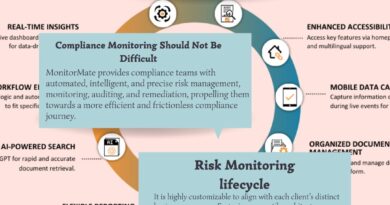How to Use Your Paystub to Create a Monthly Budget
A paystub is more than just a record of your earnings; it’s a financial tool that can help you manage your money better. Whether you’re trying to save more, pay off debt, or simply gain control over your finances, your paystub contains valuable information that can guide you in creating a personalized monthly budget. By understanding and analyzing your paystub, you can set clear financial goals, plan your expenses, and track your progress over time.
In this article, we’ll explore how to use your paystub to create a monthly budget, break down the key sections of a paystub, and explain how using a Free Paystub Generator can help you stay on top of your finances if you’re self-employed or managing a small business.
Understanding Your Paystub: Key Sections
Before diving into budgeting, it’s essential to understand the different sections of your paystub. This will help you identify what portion of your earnings is available for spending, saving, or debt repayment. Here’s a breakdown of the critical sections on your paystub:
1. Gross Pay
Gross pay is the total amount of money you’ve earned before any deductions, such as taxes, retirement contributions, or insurance premiums. It includes your regular wages, overtime pay, bonuses, and any other compensation.
- Why It Matters for Budgeting: Gross pay gives you a snapshot of your total earnings. However, it’s not the amount you take home, so you shouldn’t base your budget on this figure alone.
2. Deductions
Deductions are the amounts subtracted from your gross pay for taxes, benefits, and other obligations. Common deductions include:
- Federal, state, and local taxes
- Social Security and Medicare contributions (FICA)
- Health insurance premiums
- Retirement plan contributions (e.g., 401(k))
- Wage garnishments, if applicable
- Why It Matters for Budgeting: Deductions directly reduce your take-home pay. Understanding what’s deducted from your paycheck ensures that your budget is based on your actual net income rather than your gross pay.
3. Net Pay (Take-Home Pay)
Net pay is the amount of money you actually receive after all deductions have been subtracted from your gross pay. This is also known as your take-home pay, and it’s the amount you’ll use to create your budget.
- Why It Matters for Budgeting: Your budget should be built around your net pay since that’s the money you can use to cover expenses, savings, and discretionary spending.
4. Year-to-Date (YTD) Totals
The year-to-date (YTD) totals show your cumulative earnings, deductions, and taxes paid from the beginning of the year up to the current pay period.
- Why It Matters for Budgeting: YTD figures are useful for tracking your income trends over time, helping you adjust your budget as needed based on changes in your earnings or deductions.
Steps to Create a Monthly Budget Using Your Paystub
Now that you have a clear understanding of the key sections of your paystub, let’s walk through the steps to create a monthly budget:
1. Determine Your Monthly Net Income
The first step in creating a budget is to know how much money you bring home each month. If you’re paid biweekly, calculate your total monthly net income by multiplying your biweekly net pay by two. If you receive your pay weekly, multiply your net pay by four to estimate your monthly earnings.
- Example: If your biweekly net pay is $1,500, your monthly income is $3,000 ($1,500 x 2).
Make sure you use your net pay, not your gross pay, since this reflects your actual take-home amount.
2. List Your Fixed Expenses
Fixed expenses are the regular, recurring costs that don’t change much from month to month. These are essential expenses you need to account for in your budget. Examples of fixed expenses include:
- Rent or mortgage payments
- Car payments
- Utility bills (electricity, water, gas)
- Health insurance premiums (if not deducted from your paycheck)
- Loan repayments
- Why It Matters for Budgeting: Fixed expenses should be the first category you account for in your budget. They represent your non-negotiable, necessary costs.
3. List Your Variable Expenses
Variable expenses change from month to month and include things like groceries, transportation, dining out, and entertainment. While variable expenses can fluctuate, they still need to be managed carefully to avoid overspending.
Examples of variable expenses include:
- Groceries
- Gas and transportation costs
- Dining out and entertainment
- Clothing and personal care
- Why It Matters for Budgeting: These expenses can be adjusted if needed, making them the area where you have more flexibility to save or cut back.
4. Set Savings and Debt Repayment Goals
If one of your financial goals is to save more or pay off debt, your budget should reflect this. Decide how much of your income you’d like to allocate to savings or debt repayment each month.
- Savings: Aim to save at least 10-20% of your monthly income, whether it’s for an emergency fund, retirement, or other long-term goals.
- Debt Repayment: If you have debt, make it a priority to allocate a portion of your budget to paying down credit cards, loans, or other obligations.
- Why It Matters for Budgeting: Setting savings and debt repayment goals ensures that you’re building financial security while also working to eliminate debt.
5. Track Your Spending
Once you’ve categorized your expenses, the next step is to track your spending. Many people find it helpful to use budgeting apps or spreadsheets to record their expenses and compare them against their budget.
- Why It Matters for Budgeting: Tracking your spending helps you stay on track with your budget and spot areas where you might be overspending. It also allows you to adjust your budget as needed.
6. Adjust Your Budget as Needed
After tracking your spending for a few months, you may notice that some expenses are higher or lower than expected. Use this information to make adjustments to your budget. If you’re consistently overspending in one category, find ways to cut back, or reallocate funds from another area.
- Why It Matters for Budgeting: A budget should be flexible and adaptable to changes in your income, expenses, or financial goals.
Using a Free Paystub Generator to Manage Income and Budget
If you’re self-employed, a freelancer, or an independent contractor, you may not receive a traditional paystub from an employer. In these cases, using a free paystub generator can help you create accurate paystubs that reflect your income and deductions. This can make it easier to track your earnings and manage your budget effectively.
Benefits of Using a Free Paystub Generator
- Accurate Income Tracking: A paystub generator helps you create professional paystubs that include your gross earnings, deductions, and net pay, making it easier to track your income.
- Better Budgeting: By generating paystubs for each payment or project, you’ll have a clear understanding of your income, allowing you to create a more precise budget.
- Self-Employed or Freelance-Friendly: Freelancers and contractors can use a paystub generator to create their own paystubs, ensuring they have the necessary financial records for budgeting, tax filings, or loan applications.
- Easy Tax Preparation: Paystubs generated throughout the year can simplify your tax filings by providing an accurate record of your earnings and deductions.
How to Use a Free Paystub Generator
- Enter Your Earnings: Input your total income for a specific period, such as weekly or monthly.
- Add Deductions: Include deductions such as taxes, retirement contributions, or other obligations.
- Generate the Paystub: Once the information is entered, the paystub generator will calculate your net pay and produce a professional paystub that you can download or save for your records.
Conclusion
Creating a monthly budget using your paystub is a powerful way to take control of your finances. By understanding the key sections of your paystub—such as gross pay, deductions, and net pay—you can build a budget that aligns with your income and financial goals. For self-employed individuals and freelancers, using a free paystub generator can provide accurate income documentation, making it easier to track earnings, manage a budget, and prepare for taxes.
By following these steps and regularly reviewing your budget, you can create a financial plan that helps you save more, reduce debt, and achieve your long-term financial goals.




